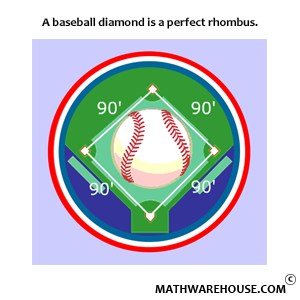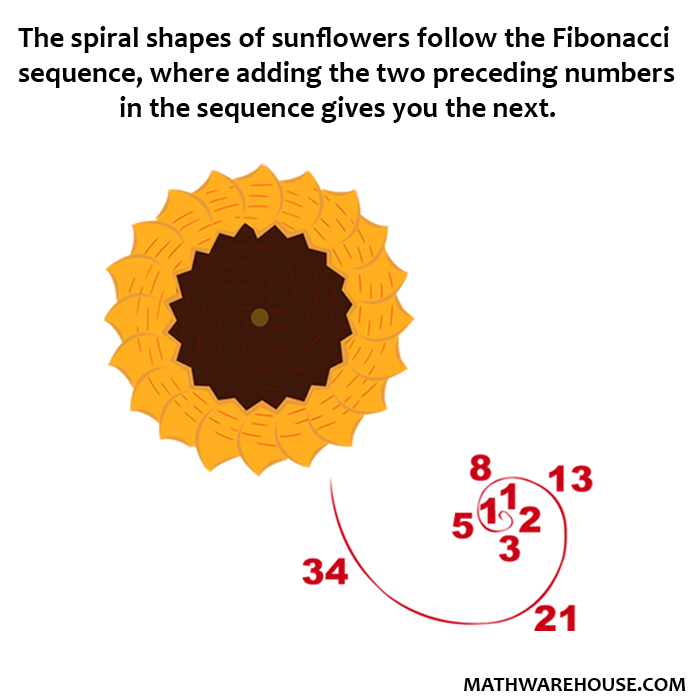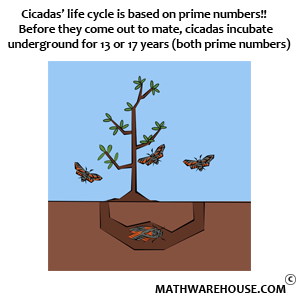Quick Overview
- First, if there is a square root, then factor out the largest power of $$x$$ that is under the radical.
- Second, simplify any absolute values.
- Third, factor out the highest power of $$x$$ from both numerator and denominator, and divide out the common factor.
- Fourth, evaluate the limit.
- Remember, $$\frac n{x^p}$$ forms go to zero as $$x$$ becomes large.
Prerequisite Information
Important algebra ideas you need to be familiar with.
- $$\sqrt{ab} = \sqrt a\cdot \sqrt b$$
- $$\sqrt{a^2} = |a|$$
- $$|a| = a$$ if $$a$$ is positive, but $$|a| = -a$$ if $$4a$$ is negative.
Examples
Example 1
Evaluate $$\displaystyle \lim_{x\to\infty}\,\frac{|x|+2}{4x + 3}$$
Step 1Simplify the absolute value.
Since the limit looks at positive values of $$x$$, we know $$|x| = x$$. So we can rewrite the limit as
$$ \displaystyle\lim_{x\to\infty}\,\frac{\blue{|x|}+2}{4x + 3} % = \displaystyle\lim_{x\to\infty}\,\frac{\blue x + 2}{4x + 3}. $$
Step 2Factor the $$x$$ out of the numerator and denominator. Then divide out the common factor.
$$ \begin{align*}% \lim_{x\to\infty}\,\frac{\blue x + 2} {4\blue x + 3} % & = \lim_{x\to\infty}\,\frac{% \blue x\left(% 1 + \frac 2 {\blue x} \right) } {% \blue x\left(% 4 + \frac 3 {\blue x} \right) }\\[6pt] % & = \lim_{x\to\infty}\,\frac{% 1 + \frac 2 x } {% 4 + \frac 3 x } \end{align*} $$
Step 3Evaluate the limit.
$$ \displaystyle\lim_{x\to\infty}\,\frac{% 1 + \blue{\frac 2 x} } {% 4 + \red{\frac 3 x} } % = \frac{1 + \blue 0}{4 + \red 0} % = \frac 1 4 $$
Answer$$\displaystyle \lim_{x\to\infty}\,\frac{|x| + 2}{4x + 3} = \frac 1 4$$
Example 2
Evaluate $$\displaystyle \lim_{x\to-\infty}\,\frac{|x|+2}{4x+3}$$
Notice that this is the same function as in Example 1, but this time $$x$$ is becoming negative.
Step 1Simplify the absolute value.
Since this limit is looking at negative values of $$x$$, we know $$|x| = -x$$. This means we can rewrite the limit as
$$ \\ \displaystyle\lim_{x\to-\infty}\,\frac{\blue{|x|}+ 2}{4x+3} % = \lim_{x\to-\infty}\,\frac{\blue{-x} + 2}{4x+3} \\ $$
Step 2Factor the largest power of $$x$$ out of the numerator and denominator. Then divide out the common factor.
$$ \begin{align*}% \lim_{x\to-\infty}\,\frac{-\blue x+ 2}{4\blue x+3} % & = \lim_{x\to-\infty}\,\frac{% \blue x \left(% -1 + \frac 2{\blue x} \right) } {% \blue x\left(% 4+\frac 3{\blue x} \right) }\\[6pt] % & = \lim_{x\to-\infty}\,\frac{-1 + \frac 2 x}{4+\frac 3 x} \end{align*} $$
Step 3Evaluate the limit.
$$ \displaystyle\lim_{x\to-\infty}\,\frac{% -1 + \blue{\frac 2 x} } {% 4+\red{\frac 3 x} } % = \frac{-1 + \blue 0}{4+\red 0} % = -\frac 1 4 $$
Answer$$\displaystyle \lim_{x\to-\infty}\,\frac{|x|}{4x+3} = - \frac 1 4$$
Example 3
Evaluate $$\displaystyle \lim_{x\to \infty}\,\frac{3x + \sqrt{4x^2+5}}{6x+1}$$
Step 1Factor the $$x^2$$ out from the radical.
$$ \begin{align*} \lim_{x\to \infty}\,\frac{% 3x + \sqrt{% 4\blue{x^2}+5 } } {6x+1} % & = \lim_{x\to \infty}\,\frac{% 3x + \sqrt{% \blue{x^2} \left(% 4+\frac 5 {x^2} \right) } } {6x+1}% \\[6pt] % & = \lim_{x\to \infty}\,\frac{% 3x + \sqrt{% \blue{x^2} } \cdot\sqrt{% 4+\frac 5 {x^2} } } {6x+1}\\[6pt] % & = \lim_{x\to \infty}\,\frac{% 3x + \blue{|x|}% \cdot\sqrt{% 4+\frac 5 {x^2}% }% }% {6x+1}% \end{align*} $$
Step 2Simplify the absolute value.
Since the limit examines positive $$x$$-values, we know $$|x| = x$$.
$$ \\ \displaystyle\lim_{x\to \infty}\,\frac{% 3x + \blue{|x|}% \cdot\sqrt{4+\frac 5 {x^2}}% } {6x+1} % = \lim_{x\to \infty}\,\frac{% 3x + \blue{x}% \cdot\sqrt{4+\frac 5 {x^2}}% } {6x+1} \\ $$
Step 3Factor the largest power of $$x$$ out of the numerator and denominator. Then divide out the common factor.
$$ \begin{align*}% \lim_{x\to \infty}\,\frac{% 3\blue x + \blue x \cdot\sqrt{4+\frac 5 {x^2}} } {6\blue x+1} % & = \lim_{x\to \infty}\,\frac{% \blue x\left(% 3 + \sqrt{4+\frac 5 {x^2}}\,% \right) } {% \blue x\left(% 6+\frac 1 x% \right)% }\\[6pt] % & = \lim_{x\to \infty}\,\frac{% 3 + \sqrt{% 4+\frac 5 {x^2}% } } {6+\frac 1 x} \end{align*} $$
Step 4Evaluate the limit.
$$ \begin{align*}% \lim_{x\to \infty}\,\frac{% 3 + \sqrt{% 4+\blue{\frac 5 {x^2}}% }% }% {6+\red{\frac 1 x}}% % & =\frac{% 3 + \sqrt{4+\blue 0} } {6+\red 0} \\[6pt] % & = \frac{3 + \sqrt 4} 6 \\[6pt] % & = \frac 5 6 \end{align*} $$
Answer$$\displaystyle \lim_{x\to \infty}\,\frac{3x + \sqrt{4x^2+5}}{6x+1} = \frac 5 6$$
Example 4
Evaluate $$\displaystyle \lim_{x\to-\infty}\,\frac{2x-\sqrt{9x^2-4}}{8x +3}$$
Step 1Factor the $$x^2$$ out of the square-root.
$$ \begin{align*} \lim_{x\to-\infty}\,\frac{% 2x-\sqrt{% 9\blue{x^2}-4% }% }% {8x +3} % & = \lim_{x\to-\infty}\,\frac{% 2x-\sqrt{% \blue{x^2}\left(% 9 - \frac 4 {x^2}% \right)% }% }% {8x +3}% \\[6pt] % & = \lim_{x\to-\infty}\,\frac{% 2x-\sqrt{% \blue{x^2}% }% \cdot \sqrt{% 9 - \frac 4 {x^2}% }% }% {8x +3} \\[6pt] % & = \lim_{x\to-\infty}\,\frac{% 2x-\blue{|x|}\cdot \sqrt{9 - \frac 4 {x^2}} } {8x +3} \end{align*} $$
Step 2Simplify the absolute value.
Since the limit examines negative $$x$$-values, we know $$|x| = -x$$.
$$ \begin{align*}% & \quad \lim_{x\to-\infty}\,\frac{% 2x-\blue{|x|}\cdot \sqrt{9 - \frac 4 {x^2}} } {8x +3}\\[6pt] % & = \lim_{x\to-\infty}\,\frac{% 2x-\blue{(-x)}\cdot \sqrt{9 - \frac 4 {x^2}} } {8x +3} \\[6pt] % & = \lim_{x\to-\infty}\,\frac{% 2x \blue{+x}\cdot \sqrt{9 - \frac 4 {x^2}} } {8x +3} \end{align*} $$
Step 3Factor the highest power of $$x$$ out of the numerator and denominator. Then divide out the common factor.
$$ \begin{align*}% \lim_{x\to-\infty}\,\frac{% 2\blue x+\blue x\cdot \sqrt{9 - \frac 4 {x^2}} } {8\blue x +3} % & = \lim_{x\to-\infty}\,\frac{% \blue x \left(% 2+\sqrt{9 - \frac 4 {x^2}} \right) } {\blue x \left(8 + \frac 3 x\right)} \\[6pt] % & = \lim_{x\to-\infty}\,\frac{% 2+\sqrt{9 - \frac 4 {x^2}} } {8 + \frac 3 x} \end{align*} $$
Step 4Evaluate the limit.
$$ \displaystyle\lim_{x\to-\infty}\,\frac{% 2+\sqrt{% 9 - \blue{\frac 4 {x^2}} } } {8 + \red{\frac 3 x}} % = \frac{% 2+\sqrt{9 - \blue 0} } {8 + \red 0} % = \frac 5 8 $$
Answer$$\displaystyle \lim_{x\to-\infty}\,\frac{2x-\sqrt{9x^2-4}}{8x +3} = \frac 5 8$$


















